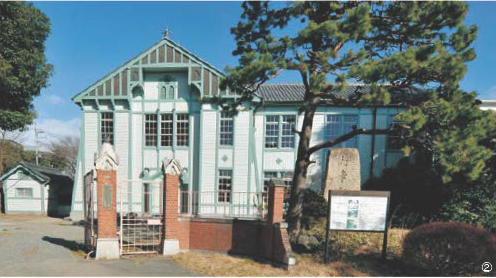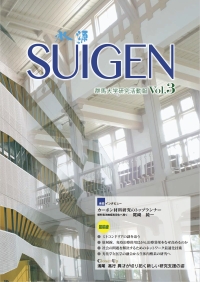

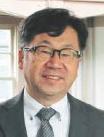
Japan boasts achievements in the development
of new forms of carbon. Japanese companies are known for holding a
two-thirds share of the global market for carbon fiber. Carbon
materials come in various types and are used in diverse fields,
including electronics, energy, and pharmaceuticals. Japan also
leads the world by researching and developing carbon structures at
the nanoscale level, such as carbon nanotubes, fullerenes, and
graphene. Professor Junichi Ozaki is one of the top runners in
carbon materials research.
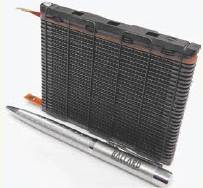
Portable fuel cell stack using carbon alloy catalyst

You may have heard the name "mitochondria" at
least once. They are tiny organelles found within the cells of our
bodies, ranging from several tens to thousands in number. However,
these organelles are more than just ordinary. They play a crucial
role in all vital activities, such as movement, thinking, and
digestion, by generating the energy necessary for these functions.
Additionally, they have their own unique set of genes called
mitochondrial DNA, which is known to be inherited exclusively from
the mother (maternal inheritance). Professor Ken Sato and
Associate Professor Miyuki Sato from the Institute for Biological
Information Signal Research have been fascinated by the mysteries
of mitochondria and have made significant contributions to their
research.

Atsushi Shibata, a research lecturer, focuses
on DNA damage and its repair reactions during cancer treatment. In
genetics, DNA serves as the blueprint for constructing our bodies.
Traditional cancer treatments aim to damage the DNA of cancer
cells; however, it is known that DNA can repair itself. Recent
research has made significant progress in the study of DNA repair.
In recent years, immunotherapy using "anti-PD-1 antibodies" has
garnered attention in cancer treatment, and it has been reported
that combining this with radiation therapy enhances treatment
efficacy. The reason for this enhanced effect and its mechanism
were previously unknown. However, the team led by Research
Lecturer Shibata made a significant discovery from the perspective
of DNA repair reactions following radiation exposure, which
contributes to unravelling the underlying mechanism. His finding
is the world's first research achievement demonstrating the
involvement of DNA repair in cutting-edge immunotherapy.

Associate Professor Kiyohito Nagano specializes in mathematical optimization, particularly algorithmic research in discrete optimization targeting structures like networks. The concept of "submodularity," which abstracts networks, is also a central research theme. He is actively involved in research in artificial intelligence fields such as machine learning, a significant application area for discrete algorithms. He has published a book titled "Submodular Optimization and Machine Learning".
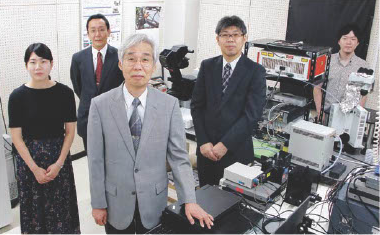
Cancer tissues are in low oxygen conditions due to abnormal cell proliferation. Cancer and many other diseases are deeply associated with oxygen deficiency (hypoxia). If we can image and visualize oxygen distribution in the body through luminescence, it can contribute to understanding the mechanisms underlying disease development. One of the research themes in Professor Seiji Tobita's laboratory is the design, synthesis, and evaluation of molecules (luminescent probes) that can detect specific biomolecules through luminescence. They have succeeded in imaging oxygen distribution in organ tissues, including cancer tissues, at a cellular level with high resolution and have made significant advances in this field.
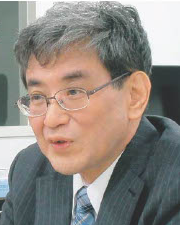
Professor Takayuki Asao continues his research on glycans and cancer, applies for patents at the university, develops medical and training devices, and continues to secure funding grants. At the same time, he deepens collaboration with local medical institutions and readily provides advice and support to young researchers regarding their research plans. This talent has created a new support system for medical and life science research at Gunma University, one of the few in the country. Currently, he is taking on the challenge of building a physiological data integration system to accelerate the development of implantable medical devices within a large consortium composed of Shinshu University, Tohoku University, Gunma University, and other institutions.

Gunma University has been promoting the "Medical-Scientific-Engineering Integration for Innovative Healthcare Technology, Medical Devices, and Pharmaceuticals Project" since the 2014 academic year. This project involves close collaboration between researchers from the Faculty of Science and Technology and the Life and Medical Sciences field. Within this project, Assistant Professor Kazumi Tanaka from the Quality and Safety of Medical Care Course and Professor Takayuki Asao from the Future Advanced Research Institute's Big Data Integration Analysis Center have taken the lead in a research theme titled "Development of an Evaluation Device for Safe Central Venous Catheterization Techniques." The research and development of this device have been progressing smoothly, and it is being sold by the collaborative development company AlphaBio Co., Ltd. (Headquarters: Maebashi, Gunma Prefecture). It has received positive feedback through nationwide training seminars and other events.
The role of the research center is to study
and develop next-generation modes of transportation. Unlike
similar research institutions, this center not only focuses on
technological development but also conducts experiments using
these technologies within society and engages in research and
promotion of the cultural aspects of new transportation methods.
Currently, the center's main pillars of activity are research on
autonomous driving and slow mobility. One distinctive feature of
the center's research on autonomous driving is its specialization
in "Level 4" automation (fully autonomous vehicles without human
drivers) for predetermined routes, such as shuttle buses running
between JR Maebashi Station and Joshin Electric Railway Chuo
Maebashi Station. The other pillar, slow mobility, refers to
traffic using vehicles that travel at speeds slower than usual
cars but faster than walking (less than 20 km/h). With support
from the Japan Science and Technology Agency (JST), Gunma
University has collaborated with the venture company Think
Together Co., Ltd. (located in Kiryu City) to develop a low-speed
electric bus called "eCOM-8" (nickname: MAYU). The company has
already sold 19 units domestically and internationally.

The Gunma University Faculty of Engineering Alumni Memorial Hall, located on the Kiryu Campus, was initially used as the main building of Kiryu Higher Dyeing School, the predecessor of the Gunma University Faculty of Science and Technology (established in 1915). It was completed in 1916.
The school specialized in two fields: dyeing and textiles. Over the years, it went through various stages, including Kiryu Higher Industrial School and Kiryu Technical School, before becoming the Faculty of Engineering of Gunma University in 1949. In 2013, the Faculty of Engineering was reorganized into the Faculty of Science and Technology.
The current building consists of a part of the original main building and an attached auditorium, which were relocated in the 1972 academic year. Despite enduring a century of wind and snow, the building has undergone several repairs, including a significant seismic retrofit in 2017.
The wooden structure has a total floor area of 987 square meters. The main building primarily utilizes Japanese cedar as the building material, and elements of the Tudor architectural style can be seen in the decorative eaves and the shape of the entrance arch, influenced by British architecture. Upon entering the entrance, a double-height hall leads directly to the auditorium. This layout follows the "direct-administration school style" commonly found in school buildings of the late Meiji period. The former auditorium is single-story but spacious, with a two- to three-story high ceiling. The podium against a decorative wall and neatly arranged benches evoke a sense of an old-fashioned church.
There are rooms dedicated to housing and
exhibiting historical materials and a dye collection. The latter
consists of approximately 4,361 actual dye samples collected from
Europe and other regions between the establishment of Kiryu Higher
Dyeing School and around 1945. Many of these dyes are no longer
obtainable, making the collection nationally and globally
invaluable. This building, the Faculty of Engineering Guardhouse,
and the former main gate of Kiryu Higher Dyeing School were
registered as a National Registered Tangible Cultural Property in
1998.

